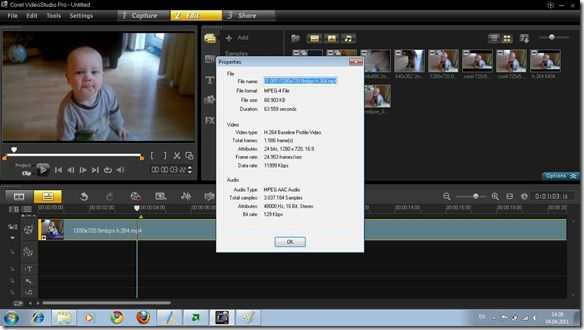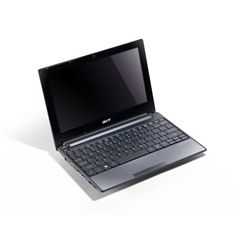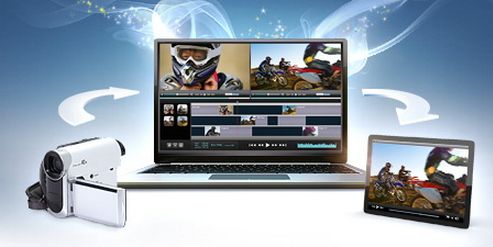 With the release on Intel’s latest generation of processors, codenamed Ivy Bridge, comes Quick Sync Video 2.0. This is an enhancement to Intel’s original Quick Sync Video technology which provides hardware encoding and decoding of video directly on the processor. All second-generation Ivy Bridge Ultrabooks feature Quick Sync 2.0 which is up to twice as fast as Quick Sync found in first-generation Sandy Bridge Ultrabooks. In order to take advantage of Quick Sync 2.0 you need to be using software that is designed to use it; a number of companies have announce support for the technology.
With the release on Intel’s latest generation of processors, codenamed Ivy Bridge, comes Quick Sync Video 2.0. This is an enhancement to Intel’s original Quick Sync Video technology which provides hardware encoding and decoding of video directly on the processor. All second-generation Ivy Bridge Ultrabooks feature Quick Sync 2.0 which is up to twice as fast as Quick Sync found in first-generation Sandy Bridge Ultrabooks. In order to take advantage of Quick Sync 2.0 you need to be using software that is designed to use it; a number of companies have announce support for the technology.
Tag Archive | "video editing"

Software Companies Optimizing for Quick Sync Video on Ivy Bridge
Posted on 09 July 2012
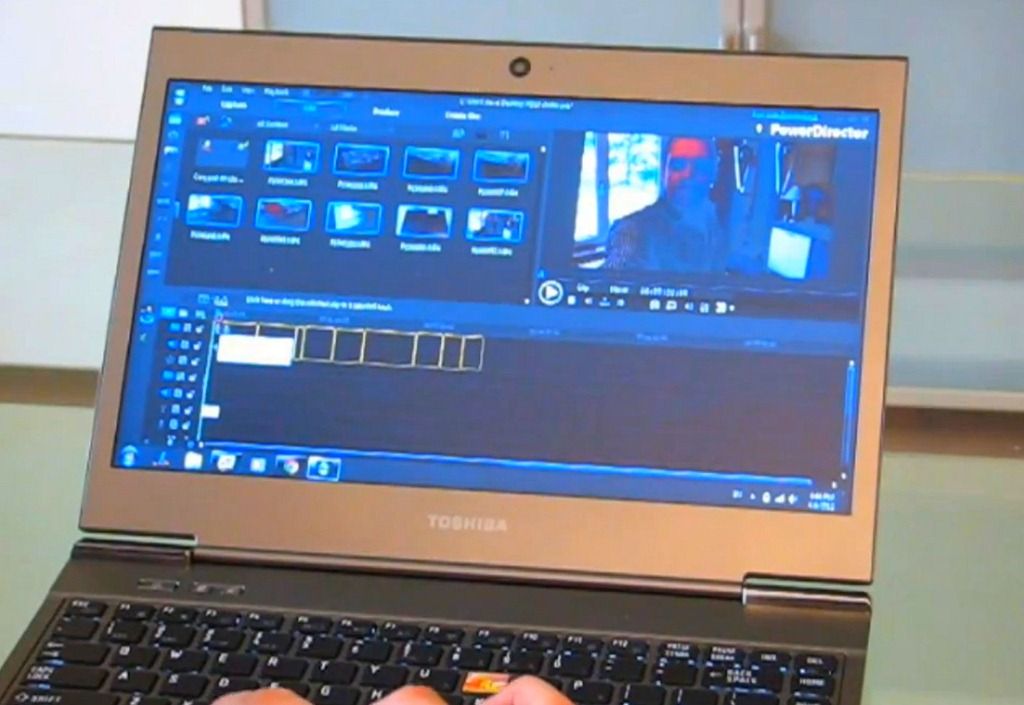
Ultra Mobile Video Editing with an Ultrabook
Posted on 07 April 2012
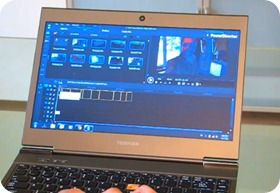 Last year I ran a series of articles about mobile video editing. I covered smartphone, netbook and ultrathin solutions before settling on a low-cost , low weight set-up.. The Samsung NP350 worked well with its 2.2Ghz Core i3 but by moving up a notch in performance and efficiency, lowering the weight and, yes, increasing the cost by well over 100%, I’ve found a solution that’s quite stunning. I’m not just talking about looks!
Last year I ran a series of articles about mobile video editing. I covered smartphone, netbook and ultrathin solutions before settling on a low-cost , low weight set-up.. The Samsung NP350 worked well with its 2.2Ghz Core i3 but by moving up a notch in performance and efficiency, lowering the weight and, yes, increasing the cost by well over 100%, I’ve found a solution that’s quite stunning. I’m not just talking about looks!
The Toshiba Z830 Ultrabook weighs less than most netbooks but packs a 1.7Ghz Core i5 that can Turbo boost to 2.7Ghz. It’s got 6Gb of RAM and a great 128GB SSD that, although it isn’t the fastest at sequential speeds, knocks the socks of a hard drive solution and works perfectly with Cyberlink PowerDirector 10. The difference between the NP350 and Z830 solutions is huge!
I demonstrated the solution at VideoCamp Germany in Düsseldorf a few weeks ago and learnt a few things too so after a few days thought, I put together a tutorial article and behind the scenes video that shows exactly how I get those product launch videos up in record time. 10 minutes from camera-on to YouTube-ready!
The article is over at Ultrabooknews.com and it shows the hardware, software, method and results.
Are you doing mobile, quick-shot video work? A video journalist perhaps? Let us know your process and hardware in the comments below.

Ultra Mobile Video Editing with an Ultrabook (Including Video Demo)
Posted on 06 April 2012
 In a series of articles over at UMPCPortal last year I looked at ultra mobile video editing solutions ranging from iPhone through netbook to Core i5-based ultra-thin setups. All solutions were put together with YouTube production in mind with cost, weight and speed being the three key ingredients.
In a series of articles over at UMPCPortal last year I looked at ultra mobile video editing solutions ranging from iPhone through netbook to Core i5-based ultra-thin setups. All solutions were put together with YouTube production in mind with cost, weight and speed being the three key ingredients.
Since completing the series I’ve stuck with a combination of lightweight laptop, camera and software that has worked well for speed, mobility and flexibility and recently, I upgraded from a hard-disk based Core i3-based system to an Ultrabook. At the same time I upgraded the software and in combination with a very flexible camera solution, the set-up is worth worth writing about. If you’re looking for a relatively low-cost YouTube production system should read this and the series of articles over at UMPCPortal
This article is also linked to a presentation I did with Nicole Scott at the VideoCamp in Duesseldorf, Germany

ASUS UX21 Live Review and Ultrabook Q&A–Today
Posted on 17 November 2011
Update: Session is finished now. A report will go up soon. is now available.
I think I’m right in saying that this is the first ever Ultrabook live review and Q&A. It happens tonight, here on Ultrabooknews.com/live
It starts at about 2100 GMT+1 (Berlin time. Your local time here)
We’ll be spending 2 hours (yes, it’s going to get detailed) testing the UX21 and we’ll include battery life testing, video video editing, gaming, web, usability and a whole lot more. There will be a chat session (already open at Ultrabooknews.com/live if you want to log in and start talking) and I’ll take general Ultrabook or UX21 questions and guidance from you. Some of the session (not all of it) will be recorded and posted tomorrow. You’ll need a flash-enabled browser and about 1mbps of bandwidth to join-in.
See you later. In the meantime, here’s a teaser and a bit of World of Warcraft on the UX21…
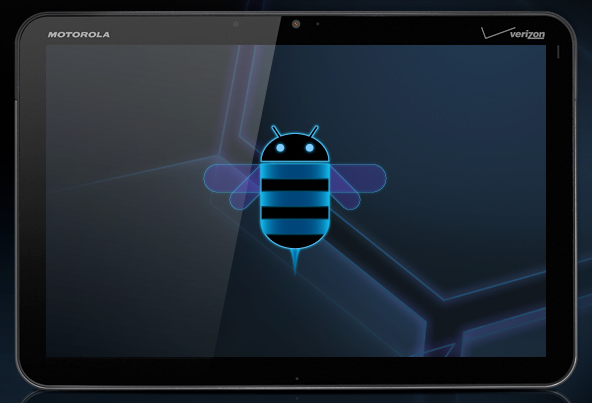
Editing HD Video with Movie Studio on Android 3.0 / Motorola Xoom [video]
Posted on 13 April 2011
 Tablets increasingly seem to want to go from companion device to dedicated device, but there’s a lot of catching up to do in terms of productivity before that can actually happen. Today, most modern smartphones are capable of capturing 720p video, that means that if a tablet wants even a chance at being a standalone device, it’s going to need to at least be able to edit those files.
Tablets increasingly seem to want to go from companion device to dedicated device, but there’s a lot of catching up to do in terms of productivity before that can actually happen. Today, most modern smartphones are capable of capturing 720p video, that means that if a tablet wants even a chance at being a standalone device, it’s going to need to at least be able to edit those files.
Android 3.0 (honeycomb) comes pre-baked with a Movie Studio application which wowed the press with what appeared to be full-fledged video editing on the tablet. But now that the Xoom [tracking page] is available to the public, we have to ask (and I can’t believe I haven’t seen people be more critical about this): Is the video editing really up to the task? You be the judge:
Incidentally, this video was shot, edited, and processed on an iPhone 4 (but not uploaded, damn YouTube file size limitations!).
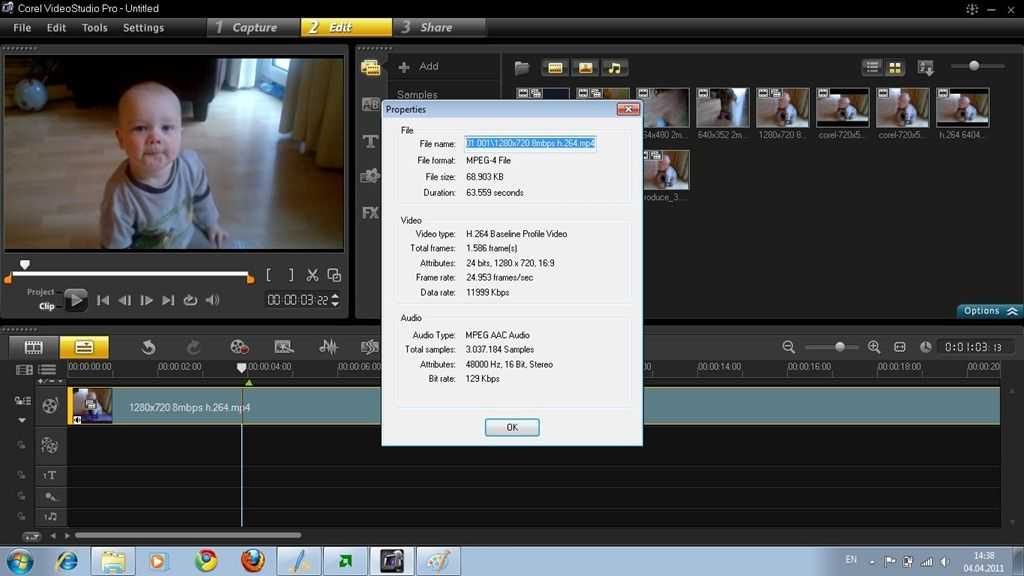
Ultra Mobile Video Editing Part 4 – Lenovo S205 / AMD Brazos Video Editing Test
Posted on 12 April 2011
You may recall that I lost a number of days work last week. Test results, screen caps and a whole bunch of text went out the window when I did a factory re-install on the device I was both testing and writing the article on. That will teach me!
The article was Part 4 of the Ultra Mobile Video Editing series and was a detailed look at two Brazos-optimised video editing applications on the Lenovo S205 AMD E-350 device. The results were, in general, quite impressive with both Cyberlink Power Director 9 and Corel VideStudio X4 showing use of the platforms features. In some cases, hardware video decoding and effects rendering was significantly speeded up through use of AMD Brazos features. In some cases, the results weren’t so good. It all depended on the type of output file.
After I lost my work on the reivew I wrote an overview of AMD APP enhancements amd i’ve just updated that with input from AMD and Cyberlink. The key thing to know with the C and E-Series APUs is this AMDs video encoding acceleration subsystem (which used to be called Avivo) which is used by many of the AMD enhanced video editors and converters, is not implemented on the E-350 (or its drivers.) It’s likely to be because it’s actually slower than the CPU but the end result is that there are limits to the enhancements that can be made.You can’t expect General Purpose GPU (GP-GPU) enhancements.
The diagram above shows the Cyberlink PowerDirector Brazos acceleration process. Note that the encode stage is 100% CPU bound. Actually this Cyberlink diagram is slightly wrong because there are some encode enhancements implemented in specific effects code that has been written to use Open CL/APP by Cyberlink.
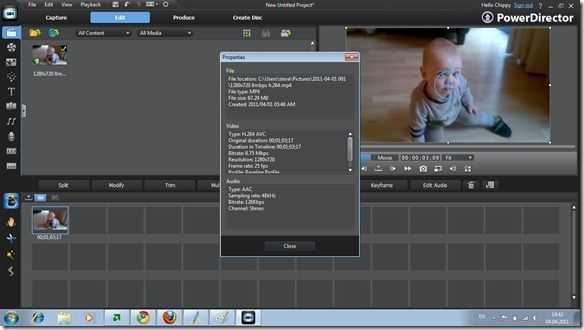
Corel Video Studio X4 (above) and Cyberlink PowerDirector 9 (bottom) video editing panes.
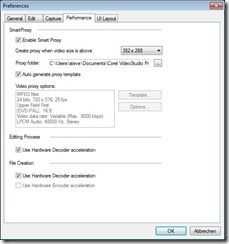
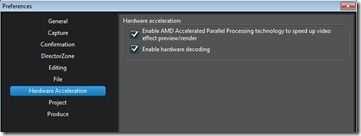
Click to enlarge. These are the hardware acceleration features in Video Studio (left) and PowerDirector.
Ultra Mobile Video Editing Test Results.
The parameters I’ve set for the project are shown below and you can read about why these parameters have been set here.
- PC and software to cost less than 600 Euros
- PC to be less than 1.5KG with 12 inch screen or less.
- Total camera + PC solution to weigh less than 2KG and cost less than 1000 Euro
- Source video should be 720p
- Video sent to YouTube should be 480p minimum
- Editing solution must include watermarking, overlays, crossfades, and multiple audio tracks.
Testing results. (Summarised from paper notes taken during testing.)
Source file: H.264 720p 8mbps 25fps. Output file H.264 720p 5mbps. All possible acceleration turned on. System power settings set to ‘always on’ (full power.)
1 Corel VideoStudio X4 managed to do this test in 3.7x real time which, for such a heavy processing job, is impressive. PowerDirector 9 took significantly longer.
2 In this test, the video decoding accelerations and memory transfer accelerations implemented tend to have little effect as the processing is very CPU intensive. Hardware video decoding and memory optimisations start to have a more significant effect where output files are smaller and use a less complex codec. 720p H.264 input and MPEG-2 DVD file output is a good example. Resutls were the same with and without accelerations enabled. Using the AMD System Monitor (V0.91) very little GPU activity was seen.
3 Using Corel VideoStudio, the E-350 CPU was 1.5x faster than the C-50 and 2X faster than an N450 CPU on this specific video encoding test.
4 For this project (480p minimum output size requirement) there wasn’t an output profile on either software suite that supported the required 852×480 output resolution. 852×480 is a favorable resolution for enabling HQ/480p experience on YouTube.
5 By adding DivX Pro to the Lenovo S205 I was able to create the required output in an AVI container. I was not successful in getting MP3 audio into the container but I’m confident this is possible. Divx Pro is a 19 Euro license. Divx Pro is a similar implementation of MPEG4 to H.264 (MPEG 4 Part 10) The rendering speed was approx 2.2X real time. This was the best result I achieved in all the tests I did and one that proves the AMD E-350 is capable of producing fast results for my specific video editing and upload requirements. Based on this test it appears that Divx Pro is more tunable (for both resolutions and encoding speed) than the H.264 codecs used in these editing suites.
6 I was able to output a 720×576 file with 16:9 aspect ratio (correct when re=sized to 852×480) using Power Director 9. The rendering speed was an impressive 1.8x real time. This option as sub-optimal as some resolution is lost when the rendered file is squashed into a 720-wide frame.
Other notes:
- The YouTube processes on both Cyberlink PowerDirector 9 and Corel Videostudio X4 don’t support an HQ profile. On Cyberlink, the profiles outpur WMV files which took much longer then H.264 files to output. (Aprox 5.5x real time)
- VideoStudio took a very long time to start from fresh boot. Over 60 seconds. PowerDirector 9 is about 25 seconds to start up in the same scenario.
- Both video editing suites were fluid in their editing processes.
- Power Director has some effects that are implemented in OpenCL for a significant acceleration advantage.
NotebookItalia also did tests (translation) with Corel VideoStudio and got similar results with Corel VideoStudio . We worked together on cross-checking our articles before posting.
Summary
Editing 720p content with these two software packages is quite acceptable for small, in-field projects. Rendering profiles need to be chosen carefully though to get the best out of the system. For my requirements a 720p H.264 file input and a 480p file output for optimal YouTube uploading I found that a combination of Corel VideoStudio and Divx Pro worked best. Hardware and memory acceleration works in this process and with an 8mbps H.264 720p file input and 480p 30fps file output with ‘fastest’ Divx encoding settings and a 2Mbps bitrate. Rendering rate was 2-2.5x real time depending on audio codex setup. (Using high-power ‘always on’ battery settings on the system.) The images below show most of the configuration settings used.
With most of the process being CPU-load though, one wonders what a dual-core N570 CPU would achieve with the same test. I will be looking to get that result added to this report as soon as possible.
Let us all know about your mobile video editing experiences in the comments/discussion below.
Stay tuned for the next part of this series where I will be testing a standard laptop CPU and chipset, possibly an Intel Sandy Bridge system.
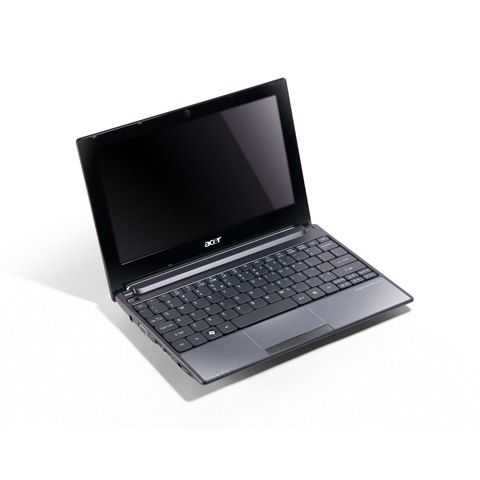
Ultra Mobile Video Editing Part2 – Refining PC Choices
Posted on 07 March 2011
In Part 1 of this series I covered three strategies for ultra mobile video editing and decided that the traditional, PC-based solution was the only real choice for today. I also set out some parameters.
The solution comes in three parts.
1 The Camera
2 The PC
3 The Editing Software
The parameters I’ve set for the project are:
- PC and software to cost less than 600 Euros
- PC to be less than 1.5KG with 12 inch screen or less.
- Total camera + PC solution to weigh less than 2KG and cost less than 1000 Euro
- Source video should be 720p
- Video sent to YouTube should be 480p minimum
- Editing solution must include watermarking, overlays, crossfades, and multiple audio tracks.
I have personal requirements for the camera that mean it also needs to be able to take photographs for the site. It should also include self-shooting (front or swivel viewfinder), built-in stereo microphone. 28mm wide-angle capability. Good low-light performance and long zoom range for close-up to press conference zoom-ins. An external mic input and hot-shoe would be an advantage.
It this stage I have two cameras in mind. The Canon SX20IS and the new (currently unavailable) Fujifilm HS20 EXR which is said to have some good, and very helpful, low-light options. It doesn’t have the self-shooting viewfinder though. I’m still looking at other solutions but for this post I want to refine the choice of PC down to a shortlist.
The current shortlist is shown below. Please feel free to propose alternatives.
- 12 inch Intel Atom solution: Asus 1215N (Intel N550 + Ion2 with 16-core CUDA) 1.45KG
- 12 inch AMD Fusion Solution: Asus 1215B (AMD E-350 APU) 1.4KG or HP DM1Z (AMD E-350)
- Intel Core i3 solutions: Lenovo Edge 11 (Intel Core i3 1.5KG) or Acer Travelmate-8172T (Core i3 1.4KG)
- Netbook solutions (*1): Samsung NC210 (N550 dual-core + 6-cells 1.22Kg) or N350 (N550 + 3 cells 1KG) or NF310 (N550 + 6 cells + 1366×768 screen 1.3KG) or ASUS 1015PN (N550+Ion2 1.25KG) or ASUS 1015B (AMD C-50) or Toshiba NB550D (AMD C-50) or Acer Aspire One 522 (with AMD C-50)
13 inch devices will remain out of scope because of size. I have to draw the line somewhere and I feel that 13 inch just goes beyond what is acceptable on a seat-back table, in one hand and in a small bag.
(*1) At this stage it seems fairly clear to me that a dual-core Intel Atom alone isn’t going to be enough on its own to process 720P video which means the pure netbook solutions fall away leaving only the Ion2-enhanced Asus 1215N where CUDA could help push the performance. The E-350 CPU performance isn’t a huge step forward from the N550 but with the 3D and HD decoding support, should help the editing experience and, possibly, a 720p-to-480p conversion stage that allows faster editing. Note that the ION2 in the Acer P1015PN doesn’t have the CUDA core required for enhanced video rendering performance. The AMD C-50 based solutions aren’t as powerful as Intel N550 for general purpose computing but do include video decoding support (not hardware encoding) which could help in a 720p to 480p pre-editing conversion process. Due to this, the NB550D and 1215B stay in the shortlist.
Interestingly, the new Intel Oaktrail platform includes 720p encoding and decoding in hardware. Unfortauntely this won’t help much in the video rendering process where almost everything is done in software. It could help with a 720p to 480p conversion process before editing but the CPU and GPU is then unlikely to be strong enough to support a smooth video editing experience.
Am I considering tablets like the Hanvon B10 and the EeePC Slate E121? No, because being lap-capable is critical and inputting text around a video is a requirement for almost everyone. Adding a USB or Bluetooth keyboard is considered a point-of-failure and would bring the weight up by 200gm.
In summary, we have an entry point of 11.1 inch screen and a minimum weight of 1.3KG. I’m surprised that I can’t find anything in the 1.0-1.2KG range. The only solutions available are all close to 1K Euro which puts them out of scope.
Prices of the items on the shortlist range from €300 to just over €600
Note: Why limit the price? I want to come up with a solution that as many people as possible can consider.
Where do we start?
I will say now that I’m looking for someone that can supply these devices for testing because i’m not about to go out and buy 5 laptops so – Free series sponsorship to any reseller that can help us with this project – but I will put my own funds into the pot and start with the smallest, lightest, cheapest option. Later today I will be heading out to pick up the 299 Euro Acer Aspire One 522 with the AMD Fusion CPU and 720p screen. For that price, it would be stupid not to!
Update: Unboxing and first impressions article is now up.
Stay tuned because I’m likely to do a live session with it if I get it. (Follow @chippy on Twitter for notifications.)
 |
| |||
 |
| |||
 |
| |||
 |
| |||
 |
| |||
 |
| |||
 |
| |||
 |
| |||
 |
| |||
 |
|



